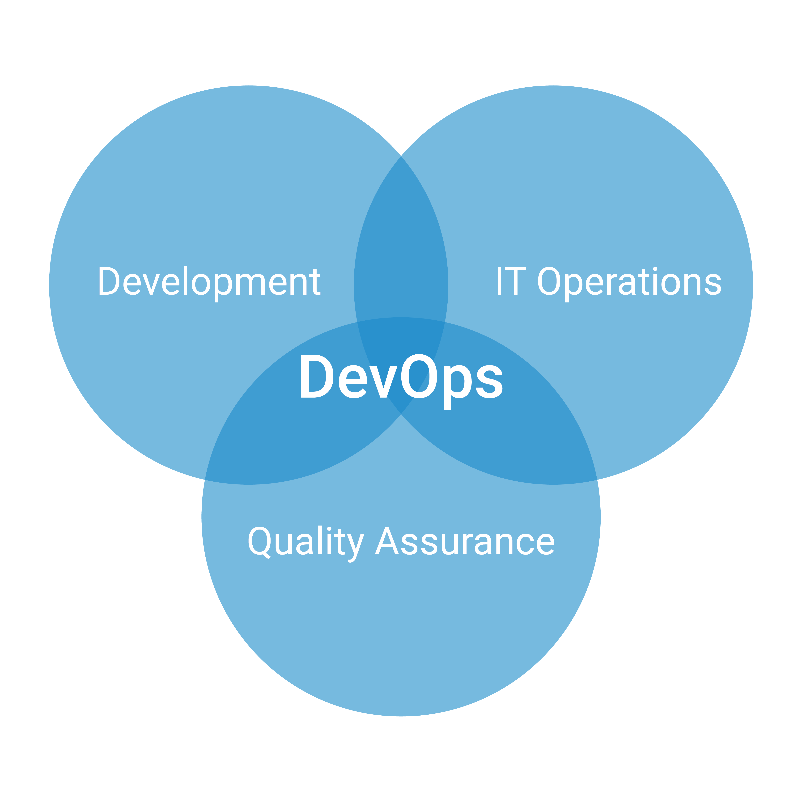Introducing DevOps
DevOps is a forward-thinking IT approach that aims to enhance collaboration between software developers and operations professionals. At its core, DevOps seeks to merge software development (Dev) and IT operations (Ops) to shorten the system development life cycle. DevOps introduces the frequent delivery of features, fixes, and updates closely aligned with business objectives.
DevOps builds up on the belief that maintaining separate development and operations teams creates bottlenecks, inefficiencies, and a slower response to market changes. DevOps breaks down these barriers and fosters a culture of continuous improvement. It encourages developers and operations staff to work together throughout the project lifecycle, from design to production support.
DevOps embodies a mindset emphasizing constant communication, collaboration, integration, and automation. These elements enhance workflow, productivity, and product quality. DevOps aims to bring together human resources, processes, and technology to provide customers with value in an efficient, reliable, and sustainable manner.For a long time, development and operations had been divided into isolated organizational sections, and both had separate concerns and responsibilities. Developers wrote the code and made sure that it worked on their development systems, while the system administrators were responsible for the actual deployment and integration in the organization’s IT infrastructure.
As there was limited communication, both teams worked mostly separately on their projects. However, they heavily depended on each other because there was no cross-platform knowledge across the different teams.
This fits nicely with the Waterfall Methodology used for most projects. The Waterfall Methodology is based on the Software Development Life Cycle (SDLC), which clearly defines software creation processes. It breaks down project deliverables into linear sequential phases, where each phase depends on the deliverables of the previous phase.
The sequence of events in the Waterfall Methodology predicts a systematic, phase-by-phase development process where each stage must be completed before the next begins, ensuring a clear progression from the conception of an idea to the deployment of a fully operational system. This method anticipates a straightforward project flow with minimal changes once the project is underway. The sequence of events in the Waterfall Methodology predicts a systematic, phase-by-phase development process where each stage must be completed before the next begins, ensuring a clear progression from the conception of an idea to the deployment of a fully operational system. This method anticipates a straightforward project flow with minimal changes once the project is underway.
This sequence of events may look as following:

The Waterfall Methodology is well suited for projects in the following circumstances:
- Early Agreement on Deliverables: Customers and developers reach a consensus on the deliverables at an early stage, with minimal alterations required throughout the development process.
- Parallel Design for Integration: To achieve integration with external systems, it is necessary to design multiple software components simultaneously, which in turn requires the early completion of design documents.
- Concurrent Project Engagement: Team members, including business analysts and developers, often work on multiple projects simultaneously.
- Limited Customer Engagement on Small Deliverables: In the case of smaller deliverables, customer participation is limited, as it is not feasible to break down the requirements phase.
However, customers may not exactly know what their requirements are before they see working software. This can result in changing the requirements, thus leading to redesign, reimplementation, and re-verification. This can dramatically increasethe costs of the project.
As a response to this circumstance, Agile and DevOps were introduced in the year 2009 and have gradually gained dominance in the realm of software development. They have become the preferred alternatives to the Waterfall Methodology for most existing projects.
DevOps is a natural extension of Agile and continuous delivery approaches, and it stands for development and operations. It is a practice that merges development, IT operations, and quality assurance into one single, continuous set of processes.
The following diagram illustrates the various parts that DevOps consists of:

Agile methodology is a collaborative and iterative approach to software development that involves key stakeholders, such as developers, administrators, testers, and a representative of the end-user’s interests, referred to as the “customer.” The term “customer” includes external clients and internal departments or users in an organization who will use the application. Instead of following rigid schedules and predefined tasks at the project’s outset, this collective team delivers applications in functional components. The development process is divided into smaller, more manageable intervals called sprints, each with a predetermined duration and a set of deliverables. These deliverables are determined and prioritized collaboratively at the beginning of each sprint based on their business value, ensuring alignment with the needs of the “customer” or end-user, whether internal or external. The process is dynamic, with deliverables reviewed and adjusted through daily builds and end-of-sprint demonstrations, promoting continuous improvement and adaptability to changing requirements.
Adopting the DevOps methodology yields several distinct advantages, particularly in the context of enhancing collaboration, efficiency, and overall project success:
- Enhanced Collaboration and Ownership: Promoting active stakeholder involvement and cooperation is essential for a successful project. In a DevOps setting, this is accomplished by implementing continuous integration and delivery. This approach encourages close collaboration between developers, operations personnel, and external and internal stakeholders, enabling them to streamline processes and enhance the product’s quality. By engaging stakeholders directly throughout the project lifecycle, a more profound sense of ownership is fostered, leading to increased collaboration and improved outcomes.
- Early and Continuous Feedback: The DevOps practice of continuous delivery allows for the early release of product versions, enabling stakeholders to provide feedback sooner. This early visibility into the product’s development stages allows for timely adjustments, ensuring that the final product more accurately reflects user needs and preferences.
- Business and Value Orientation: DevOps emphasizes a culture and practice that integrates development and operations teams, thereby focusing efforts on business outcomes and delivering value. This closer collaboration leads to a better understanding of customer needs and a more targeted approach to addressing them.
- Rapid Delivery of Initial Product Version: The principles of DevOps facilitate the rapid development and deployment of an initial product version, which serves as a foundation for further iterations. This ability to quickly release a base version not only accelerates time to market but also supports a more agile response to market and customer demands.
Now that we have covered a very brief introduction to DevOps, we are going to look at the different DevOps principles.


































































